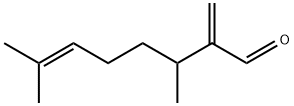GAMBOGIC ACID
Synonym(s):Beta-Guttiferrin;Guttatic acid;Guttic acid;Guttic Acid, β-Guttiferin;Beta-Guttilactone
- CAS NO.:2752-65-0
- Empirical Formula: C38H44O8
- Molecular Weight: 628.75
- MDL number: MFCD16878985
- SAFETY DATA SHEET (SDS)
- Update Date: 2025-12-23 21:30:31

What is GAMBOGIC ACID?
Description
Gambogic acid (2752-65-0) induces apoptosis in a variety of cell lines acting as an antagonist of Bcl-2 family proteins (IC50 < 1 mM)1, however additional targets may contribute to its cytotoxicity. It suppresses cancer invasion and migration by inhibiting TGFb1-induced epithelial-to-mesenchymal transition.2 Potentiates the chemosensitivity of cancer cells to other agents.3 Down-regulates surviving, reversing docetaxel resistance in cancer cells.4
The Uses of GAMBOGIC ACID
antiinflammatory, cytotoxic, inhibits HeLa cells in vitro;
What are the applications of Application
Gambogic Acid is an apoptosis inducer in sever tumor cell lines via regulation of Bax and inhibition of Bcl-2 genes
Definition
ChEBI: A natural product found in Garcinia hanburyi.
General Description
This substance is a primary reference substance with assigned absolute purity (considering chromatographic purity, water, residual solvents, inorganic impurities). The exact value can be found on the certificate. Produced by PhytoLab GmbH & Co. KG
Biological Activity
Natural product isolated from the Garcinia hanburyi tree. Induces apoptosis in several tumor cell lines including T47D cells. Activates caspases with an EC 50 value of 0.78-1.64 μ M and competitively inhibits antiapoptotic Bcl-2 family proteins (IC 50 values are 1.47, 1.21, 2.02, 0.66, 1.06 and 0.79 μ M for Bcl-XL, Bcl-2, Bcl-W, Bcl-B, Bfl-1 and Mcl-1 respectively). Also blocks K IR 2.1 channels (EC 50 ≤ 100 nM).
Biochem/physiol Actions
Gambogic acid acts as a caspase activator and apoptosis inducer, which causes an irreversible arrest in the G2/M phase of the cell cycle.
Anticancer Research
Gambogic acid is a xanthonoid, also known as kokum that is a resin from Garciniaindica, that can inhibit the proliferation of human breast, hepatoma, lung, and gastriccarcinoma cells. It is also an apoptotic inducer and inhibits telomerase and theexpression of telomerase reverse transcriptase mRNA and its promoter. It also suppressesCDK7-mediated CDC2/p34 phosphorylation, downregulates Bcl-2, andinteracts with c-myc. By interacting with transferrin receptors, it mediates apoptosisof cancer cells. It inhibits NF-κB pathway. In vivo and in vitro experiments determinedits potential to inhibit angiogenesis and VGEF-2 receptor, and thus it inhibitshuman endothelial cell growth, invasion, and migration, microvessel growth, andtube formation (Zhang et al. 2004; Pandey et al. 2007; Aggarwal et al. 2008).
GA, extract from Garcinia hanburyi, the most important active constituent of gamboge,inhibits the heat shock protein (Hsp90) (Zhang 2010). Hsp90 is the majorprotein in tumour regeneration as well as cell signalling, and its inhibition results ininduction of ER stress, thereby activating UPR target genes and ER stress sensorswhich further cause cell death (Lamoureux et al. 2014). Severe or sustained ERstress increases CHOP expression and stimulates IRE1α apoptotic signalling, ATF6and PERK. CHOP being the major regulator of Bcl2, Bim and DR5 leads to cellularapoptosis preventing tumour progression (Krajarng et al. 2015).
References
1) Zhai et al. (2008), Gambogic acid is an antagonist of antiapoptotic Bcl-2 family proteins; Mol. Cancer Ther. 7 1639 2) Zhao et al. (2017), Gambogic acid suppresses cancer invasion and migration by inhibiting TGFβ1-induced epithelial-to-mesenchymal transition; Oncotarget 8 27120 3) Wei et al. (2017), Gambogic acid potentiates the chemosensitivity of colorectal cancer cells to 5-fluorouracil by inhibiting proliferation and inducing apoptosis; Exp. Ther. Med. 13 662 4) Wang et al. (2008), Gambogic acid, a potent inhibitor of surviving, reverses docetaxel resistance in gastric cancer cells; Cancer Lett. 262 214
Properties of GAMBOGIC ACID
| Melting point: | 88.5°C |
| Boiling point: | 586.06°C (rough estimate) |
| alpha | D20 -685° (methanol) |
| Density | 1.1057 (rough estimate) |
| refractive index | 1.5290 (estimate) |
| storage temp. | -20°C |
| solubility | DMSO: ≥10mg/mL |
| form | powder |
| pka | 4.58±0.36(Predicted) |
| color | yellow to orange |
| Stability: | Stable for 1 year as supplied. Solutions in DMSO or ethanol may be stored at -20°C for up to 1 month. |
Safety information for GAMBOGIC ACID
| Signal word | Danger |
| Pictogram(s) |
 Skull and Crossbones Acute Toxicity GHS06 |
| GHS Hazard Statements |
H301:Acute toxicity,oral H315:Skin corrosion/irritation H319:Serious eye damage/eye irritation H335:Specific target organ toxicity, single exposure;Respiratory tract irritation |
| Precautionary Statement Codes |
P261:Avoid breathing dust/fume/gas/mist/vapours/spray. P264:Wash hands thoroughly after handling. P264:Wash skin thouroughly after handling. P270:Do not eat, drink or smoke when using this product. P301+P310:IF SWALLOWED: Immediately call a POISON CENTER or doctor/physician. P302+P352:IF ON SKIN: wash with plenty of soap and water. P305+P351+P338:IF IN EYES: Rinse cautiously with water for several minutes. Remove contact lenses, if present and easy to do. Continuerinsing. |
Computed Descriptors for GAMBOGIC ACID
| InChIKey | GEZHEQNLKAOMCA-XKZIYDEJSA-N |
New Products
4,4-Difluoropiperidine hydrochloride tert-butyl 9-methoxy-3-azaspiro[5.5]undecane-3-carboxylate Indole Methyl Resin N-Isopropylurea N,N-Dicyclohexylcarbodiimide(DCC) MELDRUMS ACID 5-METHYLISOXAZOLE-4-CARBOXYLIC ACID Magnessium Bis glycinate Zinc ascorbate 1-bromo-2-butyne 2-acetamidophenol 9(10H)-anthracenone Erythrosin B, 4-Piperidinopiperidine 2-((4-morpholinophenylamino) (methylthio) methylene) malononitrile 2,4-dihydroxybenzaldehyde 3-(4-morpholinophenylamino)-5-amino-1H-pyrazole-4-carbonitrile Methyl 2-methylquinoline-6-carboxylate 2,6-dichloro-4-nitropyridine 4-Bromo-2-chlorobenzonitrile 2-(benzylamino)acetic acid hydrochloride 4-(tert-Butoxycarbonylamino)but- 2-ynoic acid 3,4-dihydro-2H-benzo[b][1,4]dioxepine 1-Phenyl-1-cycloprppanecarboxylicacidRelated products of tetrahydrofuran








You may like
-
 Gambogic acid 95.00% CAS 2752-65-0View Details
Gambogic acid 95.00% CAS 2752-65-0View Details
2752-65-0 -
 Gambogic acid 95% CAS 2752-65-0View Details
Gambogic acid 95% CAS 2752-65-0View Details
2752-65-0 -
 Gambogic Acid, Garcinia hanburyi CAS 2752-65-0View Details
Gambogic Acid, Garcinia hanburyi CAS 2752-65-0View Details
2752-65-0 -
 R,S-Gambogic acid CASView Details
R,S-Gambogic acid CASView Details -
 3-(4-amino-1-oxoisoindolin-2-yl)-1-methylpiperidine-2,6-dione 98%View Details
3-(4-amino-1-oxoisoindolin-2-yl)-1-methylpiperidine-2,6-dione 98%View Details -
 20677-73-0 (2,2-diethoxyethyl)methylamine 98%View Details
20677-73-0 (2,2-diethoxyethyl)methylamine 98%View Details
20677-73-0 -
 3-(4-(hydroxyamino)-1-oxoisoindolin-2-yl)piperidine-2,6-dione 98%View Details
3-(4-(hydroxyamino)-1-oxoisoindolin-2-yl)piperidine-2,6-dione 98%View Details -
 57381-49-4 2-bromo-4-chlorobenzonitrile 98%View Details
57381-49-4 2-bromo-4-chlorobenzonitrile 98%View Details
57381-49-4
